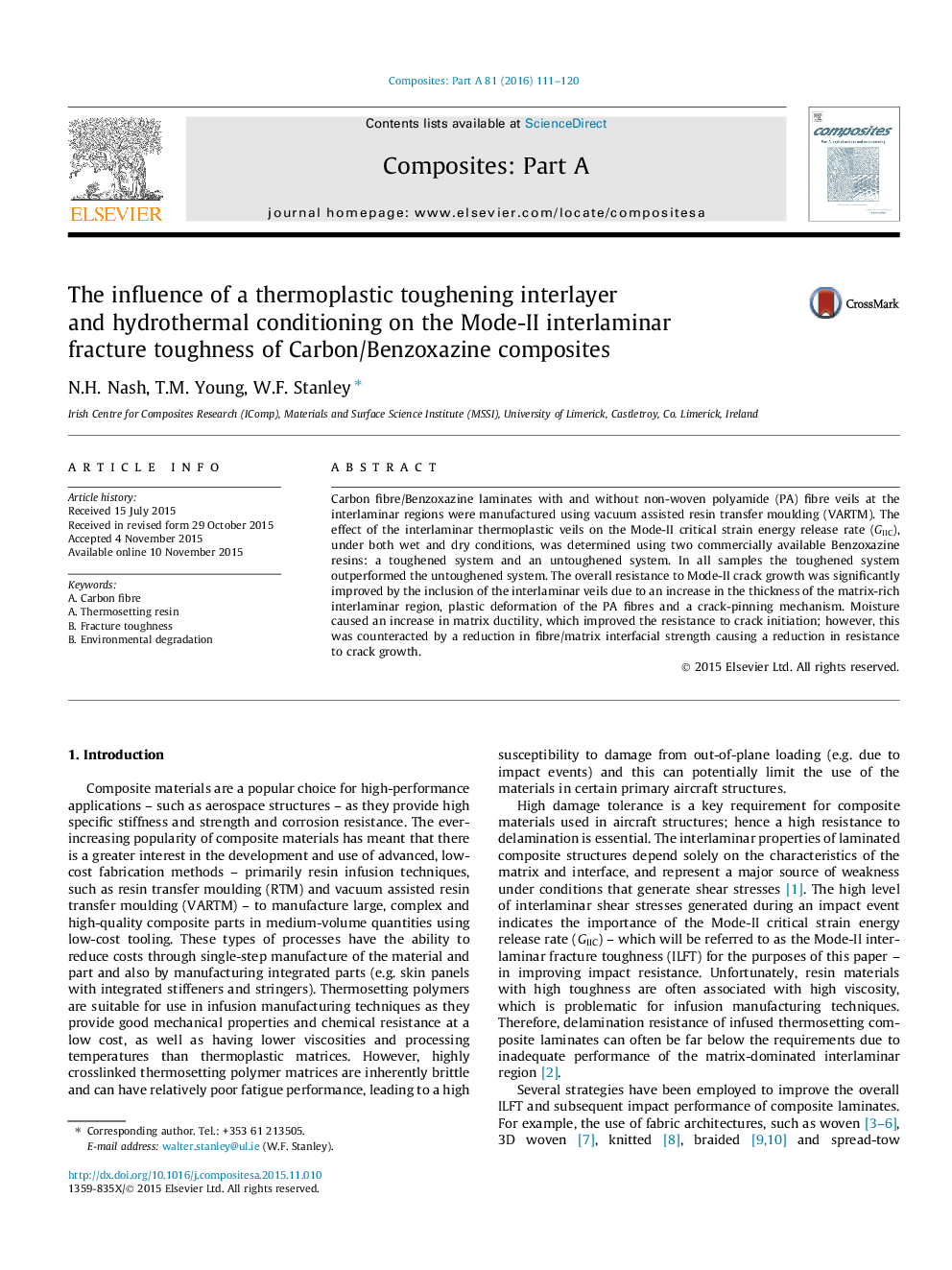| Article ID | Journal | Published Year | Pages | File Type |
|---|---|---|---|---|
| 7891276 | Composites Part A: Applied Science and Manufacturing | 2016 | 10 Pages |
Abstract
Carbon fibre/Benzoxazine laminates with and without non-woven polyamide (PA) fibre veils at the interlaminar regions were manufactured using vacuum assisted resin transfer moulding (VARTM). The effect of the interlaminar thermoplastic veils on the Mode-II critical strain energy release rate (GIIC), under both wet and dry conditions, was determined using two commercially available Benzoxazine resins: a toughened system and an untoughened system. In all samples the toughened system outperformed the untoughened system. The overall resistance to Mode-II crack growth was significantly improved by the inclusion of the interlaminar veils due to an increase in the thickness of the matrix-rich interlaminar region, plastic deformation of the PA fibres and a crack-pinning mechanism. Moisture caused an increase in matrix ductility, which improved the resistance to crack initiation; however, this was counteracted by a reduction in fibre/matrix interfacial strength causing a reduction in resistance to crack growth.
Related Topics
Physical Sciences and Engineering
Materials Science
Ceramics and Composites
Authors
N.H. Nash, T.M. Young, W.F. Stanley,
